The Shuswap/Revelstoke real estate market saw significant changes reflecting broader regional trends in the Okanagan and we’ve decide to break it down for you! Here are the key highlights of the 2024 Q3 real estate market report:
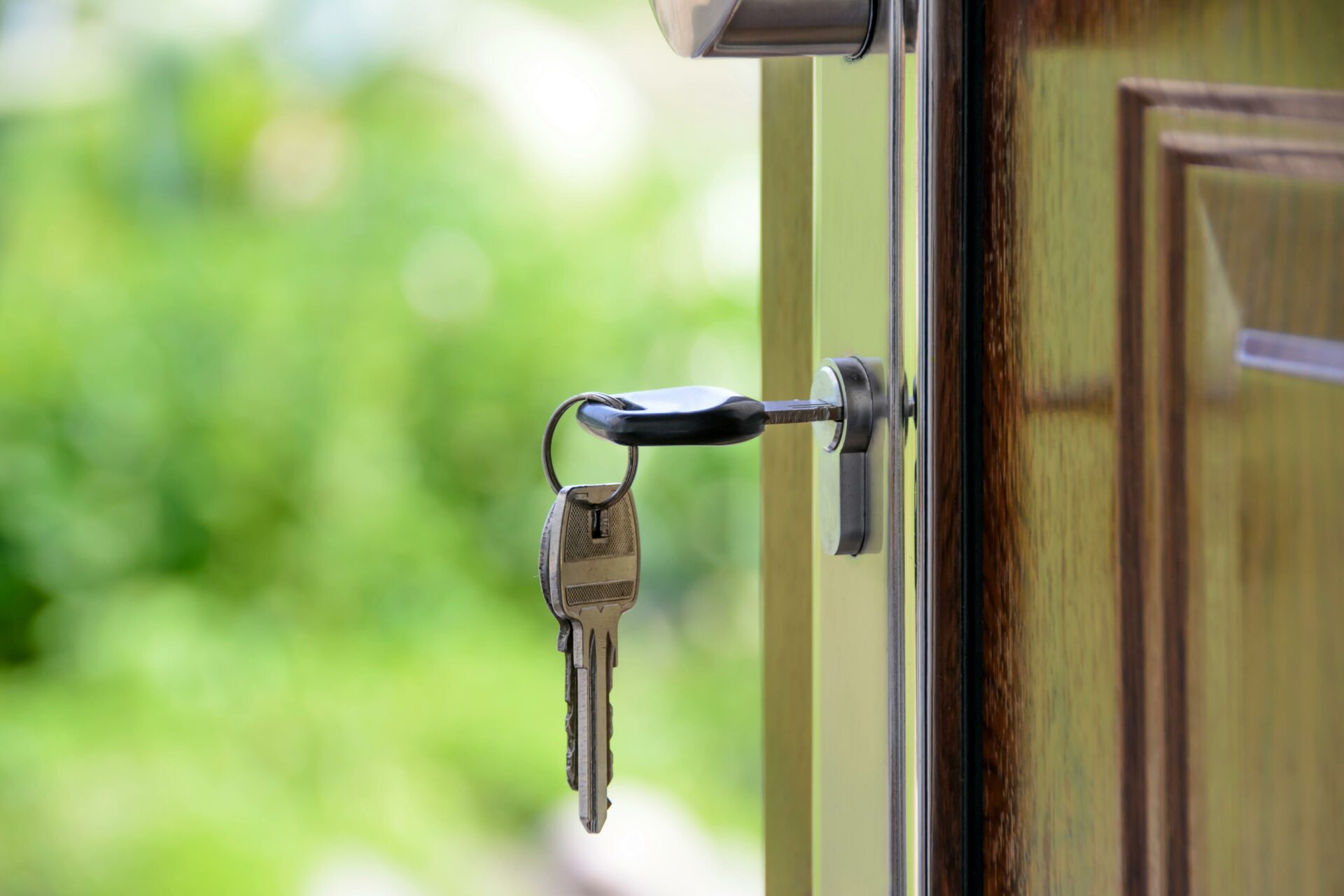
Sales & Listings
The Shuswap/Revelstoke region faced a slowdown in transactions, with a rise in active listings by 31.2% year-over-year. Homes that were sold below $700,000 represented 55% of transactions, but only 39% of listings, reflecting a demand-supply imbalance. Higher-priced homes, over $1 million, accounted for 36% of listings but only 18% of sales.
Market Conditions
In this Quarter our market favored buyers with sales representing less than 40% of new listings, yet sellers remained firm on prices. This stability is due, in part, to many homeowners benefiting form low mortgage rates or limited pressure to sell. Benchmark prices fell slightly from their peak, though they remained 40-60% above pre-pandemic levels.

Government Policies
New housing policies, such as increased listings for vacant homes, aimed to address inventory shortages. Additionally, upcoming changes, including an insured mortgage price cap increase to $1.5 million and extended amortization options for first-time buyers, aim to boost affordability and buyer confidence.
Tourism Impact
Reduced tourism, influenced by wildfire fears and economic factors alongside policies like the short term rental ban and real estate taxes, has adversely affected local short-term rental demand, which is vital to the Shuswap/Revelstoke housing market.
Looking ahead, the region anticipates limited change through the end of 2024, with a predicted market stimulation expected in spring of 2025 as further interest rate cuts and policy impacts unfold.

Keep Holiday Decorating to a Minimum
While decorating for Halloween or Thanksgiving can be quite enjoyable, it is better to keep those decorations in storage while you are trying to sell your home. you may enjoy decorating for Halloween or Thanksgiving, it’s better to keep your decorations in storage when selling your home. An abundance of seasonal decor can be distracting, and some items may even offend a potential homebuyer. Keeping the decorating to a simple fall theme, like an autumn inspired wreath or fall colour palette may be a better option.
Emphasize Being Cozy
From cozy fires to your favourite comfort meals, autumn is a season in which comfort is of utmost importance. When staging your home you can use this to your advantage by accentuating spaces around your home with extra pillows, throw blankets, soft rugs, and welcoming colours. If you have a fireplace, stack some wood near it to help potential buyers imagine themselves warming up there on a cool fall day. You can even ask your agent to turn on a gas or electric fireplace before the showing to emphasize that cozy feel.

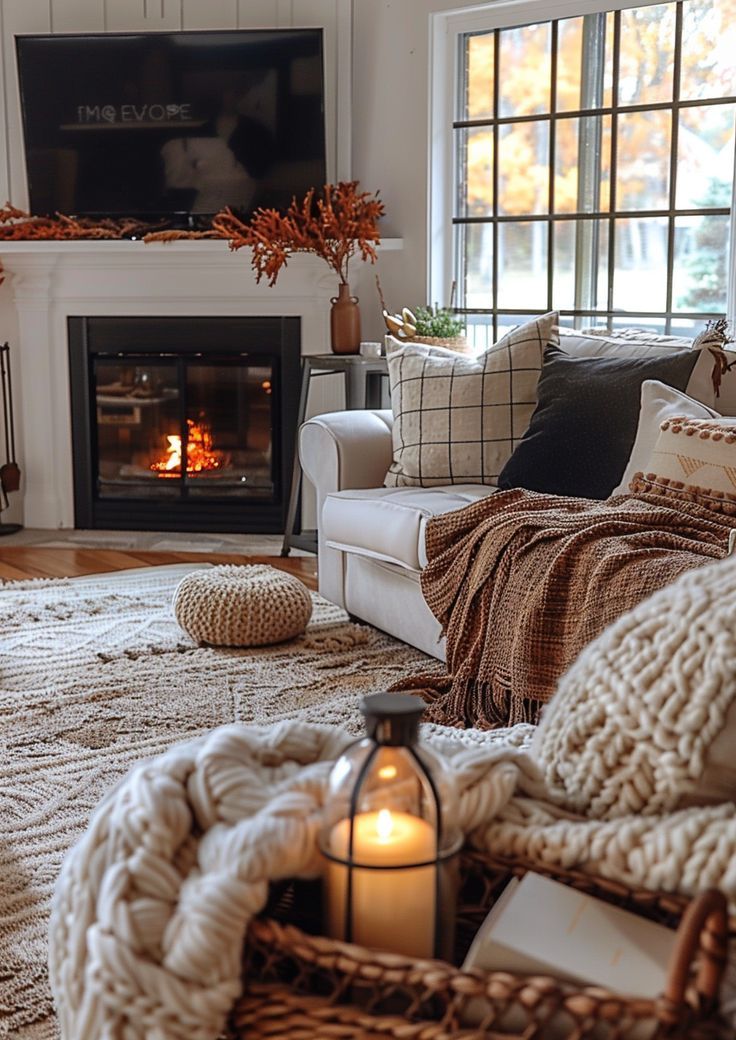
Keep Up The Curb Appeal
With summer being over, the green scenery begins to fade but don’t let it get you down! There is plenty you can do to make your outdoor space look just as welcoming as the inside during the fall season. Some suggestions include: keeping up with raking leaves, planting fall-friendly flowers like mums and pansies, cleaning the gutters, trimming back plants or bushes, and adding a new doormat. Remember to keep the holiday decor away, but a fresh pumpkin or two on the front porch can still add a pop of colour and make it feel more homey (just watch they don’t rot!)
Make Use of Light
As fall progresses and days grow shorter, natural light can be hard to come by. If you have additional light around your home it can help the space look larger and more inviting. Go room to room, and try to scope out any shadowy areas that could benefit from a lighting upgrade. Lamps and candles (battery powered are great especially for fire safety) are great additions to any room. Don’t forget to replace any burned-out bulbs and to turn on your exterior lights as well so guests can get a better look at your home and yard.

Turn On The Heat
In Canada, our autumn days can get frigid so it is imperative to keep your home as comfortable as possible during a showing so keep your home’s temperature at a reasonable temperature so to keep guest warm but not overheating! If you have a fireplace that produces heat, turning that on can help not only with warmth in your home but also creating the cozy atmosphere you are hoping to achieve.

Mobile homes, sometimes called manufactured homes, have gained popularity in recent years due to their affordability, safety, and flexibility. These homes are made entirely in a factory and then moved to your desired location or you can purchase one that is already located in a mobile home park. Mobile homes are not necessarily truly mobile since they are semi-permanent but have mobile capabilities when necessary. Most mobiles you will find in Canada are either single-wide (90 ft long and 18 ft wide) or double-wide (over 20 ft wide).
These home are a good option for those wanting to get their foot in the door but may not be able to afford the prices of traditional homes. To help prepare anyone who is thinking of purchasing a mobile home, we have listed five things you should know before buying!
Proper Installation is Crucial
If you are purchasing a mobile home to then be transported to a property, having the home be correctly installed is crucial. Approximately 80 percent of warranty complaints are regarding damage to the home during installation. This can then lead to issues with plumbing and/or bowing in the home. There are numerous types of foundations that are available for mobile homes that will help ensure that it is properly installed and situated. Oh and don’t forget, make sure there is a slope on one end around the house to ensure water does not pool underneath.
Mobile Homes Can Depreciate in Value
Unfortunately, mobile homes can depreciate in value once it leaves the factory and renovations may do very little to increase the value of the home over time. If increasing the value is key for you, consider purchasing the underlying land. That land is considered personal property and could see an increase in value mainly as a result of the land.
You May Not be Eligible for a Conventional Mortgage
Unless you have purchased the land your mobile home will be going on, getting a mortgage for a mobile home can be trickier. If you do not own the land or if you own the land but your mobile home is moveable, then it is typically not eligible for a traditional mortgage. Personal loans are likely your best option in these cases but make sure to take a deeper dive and talk to your financial institutions about what options will work and are best fit for you.
Mobile Homes are Cost Effective and Low Maintenance
Due to the size and the durable, modern materials used in mobile home construction, little maintenance is required. It can also be more cost effective as you are not only spending less to maintain the mobile home but also to run it as well (electrical and water). There are typically monthly pad rentals if you choose to live in a mobile park but in comparison it is still more affordable than paying rent for a home you do not own or the monthly mortgage rates and extra fees of a traditional home.
Electrical Certification is a Must
Having a licensed electrical contractor inspect your home’s wiring to make sure it meets safety standards, whether it’s post-installation or if you are buying one already in a mobile home park, is crucial. An electrical approval label can be used in lieu of a CSA label if/when you list the manufactured home for sale. Plus it is also greatly important for your own safety while you reside there as most mobile home fires are due to electrical issues.
Mobile homes are an excellent option for buyers looking for an alternative home in the current housing and affordability crisis. We wish you best of luck on your future mobile home endeavors!

With spring around the corner I can imagine a lot of you are thinking about the deep spring clean where you not only clean your house but also pare down on your belongings. You might be asking yourself though, how much, exactly, do you get rid of? And how can I prevent it rom piling up again? Part of the solution is in the numbers; the number of towels, pairs of shoes, and so on and how many you decide to keep in each category. Below we have complied some ideas on how to get started and how to maintain the numbers you want!
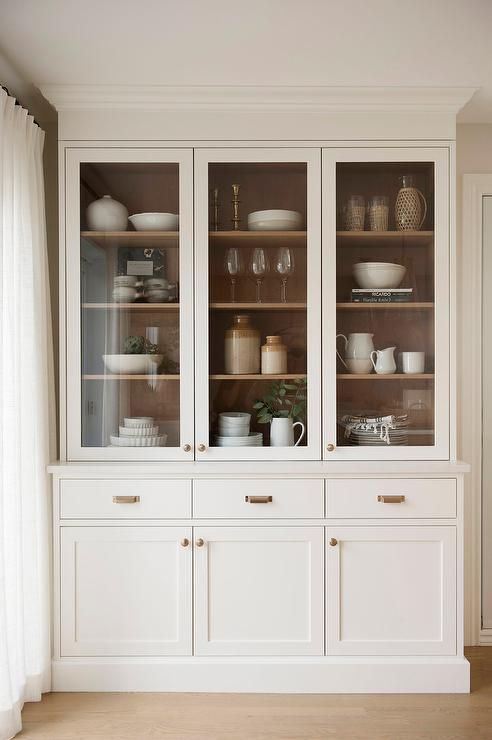
The “Sometimes” Dilemma
what do you do if you only use something occasionally? Fancy china and specialized cookware tools come to mind. If you love these kinds of items, enjoy having them for those particular situations, and have the space to store them then by all means keep them but be mindful about how much you are keep and why. Sometimes we force ourselves to keep items purely out of guilt (typically inherited items) but we want things we love and bring us joy in our homes so if you do not have the desire or need for those items see if someone else in the family wants it or sell it or donate to charity.
One way to keep rarely used items in check is to limit the amount of storage space you afford them. Instead of allowing those items to take over multiple spaces in your home, decide on one space to store those “sometimes” items. For instance, keeping all your nice china and dishes in a beautiful hutch. This way they have their own space and you could have them on display. Make sure, though, to give away or sell something to free up space if you acquire more items down the road.
Laundry & Linens The Rule of Three: One in the Wash, One in the Cupboard, One in Use.
Have you heard of the rule of three: one in the wash, one in the cupboard, one in use? If not you have now and should be on repeat whenever you are reassessing your numbers for linens. It can be difficult to come up with a number of items to keep, but sticking with one for the shelf, one to use and one to wash keeps things simple. I follow this rule for sheets (per bed) and towels (per person). For guests, usually two sets of sheets and two sets of towels is enough. All in all though, the numbers are up to you!
The Seasonal Exception
Depending on the season you may want to have those extra blankets or the differing home decor pieces. It can be a nice change of pace to bring out warmer hues for winter and lighter lines in summer. This does not mean you need to over-do the amount of sets you have. Being mindful of items that could work in multiple seasons and differing spaces in your home can help minimize the amount of “stuff” you have. For example, having a set of curtains for spring and summer and a set for fall and winter.

Special Case: Clothes & Kids’ Stuff
Clothes and shoes can be the most personal and challenging of items to get rid of and put limits on. That being said, it can still be worthwhile to do an inventory. After seeing the 20 white t-shirts and 40 pairs of shoes, you may decide to bring those numbers down. Just remember, if you don’t love it, leave it.
When a child’s room is overflowing with stuff, it’s hard to focus on any one thing, and pretty soon all of those lovingly chosen toys become just part of the mess. setting space constraints can help you handle the situation by dedicating certain shelves, a closet, or a bin for the toys and other belongings. This way it might even be easier for your child to clean it all up! When those spaces begin to overflow or you start to notice things piling up, take that as a sign to give something away.

The Everyday Stuff
This is where the real purging happens. Do you know how many plastic bowls, wineglass, and random spoons you have? I know I had a lot. It may be nice to have enough or a few extra of these “everyday” items, especially for those bigger family dinners and days where you don’t seem to have enough time to wash the dishes, but you won’t likely need more than that. Not everyone wants to stick with one set of white dishes (although for simplicity’s sake, that’s surely an easy way to go). But you can still set a limit at a certain number of sets. If you go over your number, it’s time to start purging.
Special Cases: Tupperware & Your Passions
I don’t know about you but tupperware containers are a scary piece in my home. It seems like when you aren’t looking they multiply and you can never find the matching lid! This should be a sign it is time to go through those unmatched tupperware pieces. Unless you are into meal prepping, how many leftovers could we possibly have at the same time? With this in mind, I think it’s time to go through those lost and forgotten tupperware and clear them out, I know I will be.
Your passions matter but I am sure you know how easy it is to collect more and more stuff in order to support that passion. If you are looking to rein it in a bit, make sure you are aware of what you have, how many of them, and their quality, oh and make sure you actually use it! For instance, if you knit, take inventory of all the yarn you have and see if you still love those unused packs.
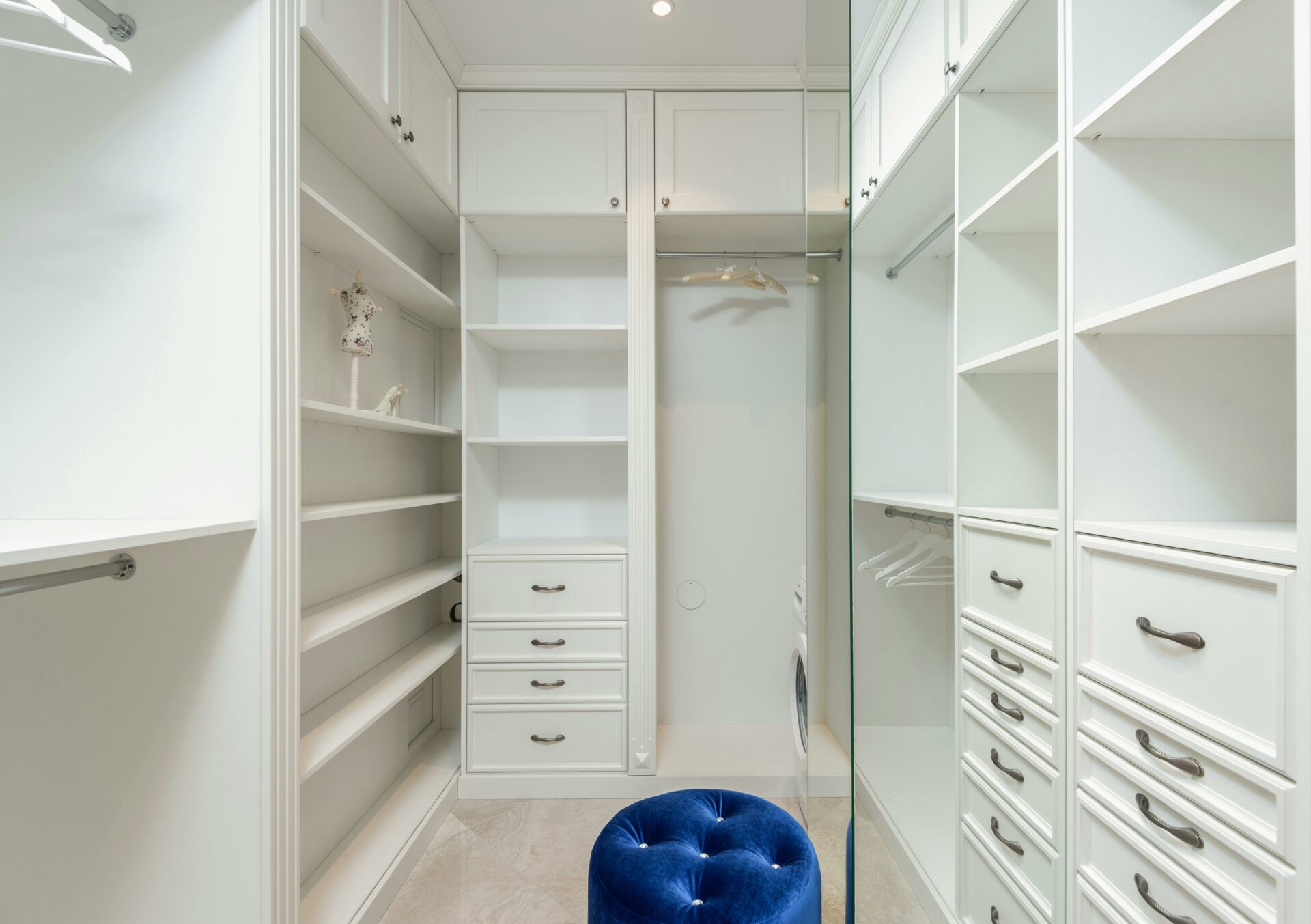
Just Because You Have the Space to Store it, Doesn’t Mean You Should
Extra space can be deceptive. If you have extra storage space, big closets, and those empty shelf spaces, don’t think you are off the hook. Pairing down on items not only relieves stress (especially that subconscious stress) and takes time off cleaning/organizing, but it also allows more space for you to see the beauty of the things you love in your home. And if you ever need to downsize in the future, the process will be far less gut wrenching if you have already chosen to live with less stuff. All in all, set your own rules. The point of this is to help you gain awareness of what kind of and how much stuff you need, so you can tailor your stuff to fit your life. And no one else can really do that except for you.
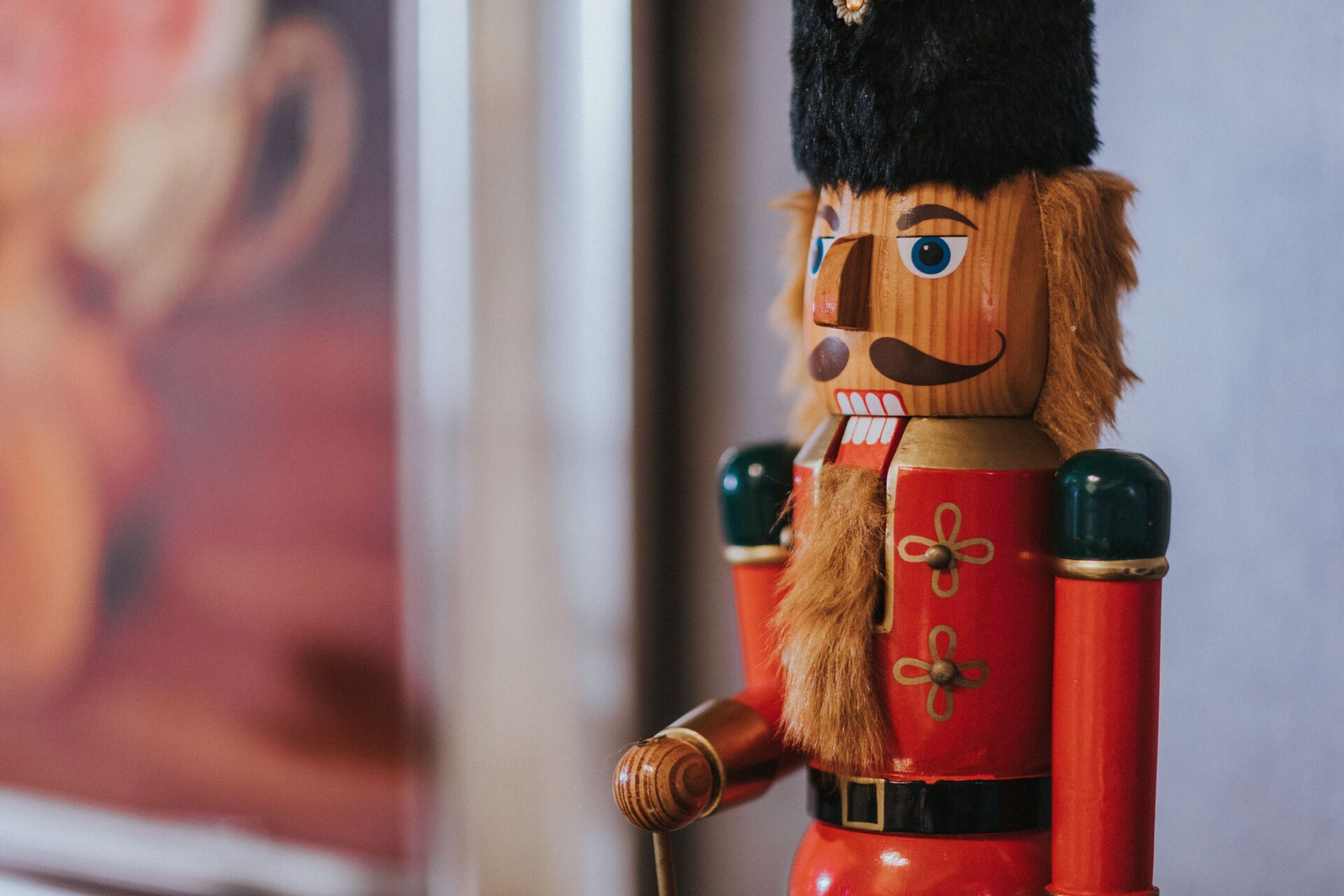
The holiday season is upon us, and what better way to usher in the festivities than by transforming your home into a haven of warmth and enchantment? This year, the 2023 holiday home decor trends are all about embracing a harmonious blend of earthy tones, rich hues, and whimsical elements that will transport you to a winter wonderland. From timeless classics to innovative twists, let’s explore the magical world of holiday decor that awaits.
Nature-inspired decor continues to reign supreme, with earthy tones taking center stage. Think warm browns, deep greens, and muted yellows that create a cozy and grounded atmosphere. Incorporate wooden accents, such as rustic tables and chairs, to amplify the natural vibe. Don’t forget to use fresh greenery to really bring in the magic of the outdoors! Along the numerous woodland themes this year for holiday decor is mushrooms, woodland creatures, and flocked trees.

You can also pop in some rich hues of burgundy, icy blue, or golds to add a touch of opulence and modern flair to your holiday home, setting the stage for a lavish celebration or incorporate some timeless, festive classics of candy striped stockings and ribbons or vintage pieces from local shops to evoke nostalgia and joy.
Carrying forward from the Autumn decor trends is the faux florals and pampas grass which ties in with the popular piece this holiday season of embracing sustainability. Upcycling, repurposing, or even creating your own handmade decorations with family and friends not only benefits the planet but also brings in a personal touch to your celebrations.

As you embark on your holiday decor journey this year, let these trends inspire you to create a festive haven that reflects your unique style and personality. Whether you prefer the timeless allure of candy cane stripes or the bohemian flair of feathers and pampas grass, the 2023 holiday home decor trends offer a myriad of possibilities to make this season truly magical. Happy decorating!
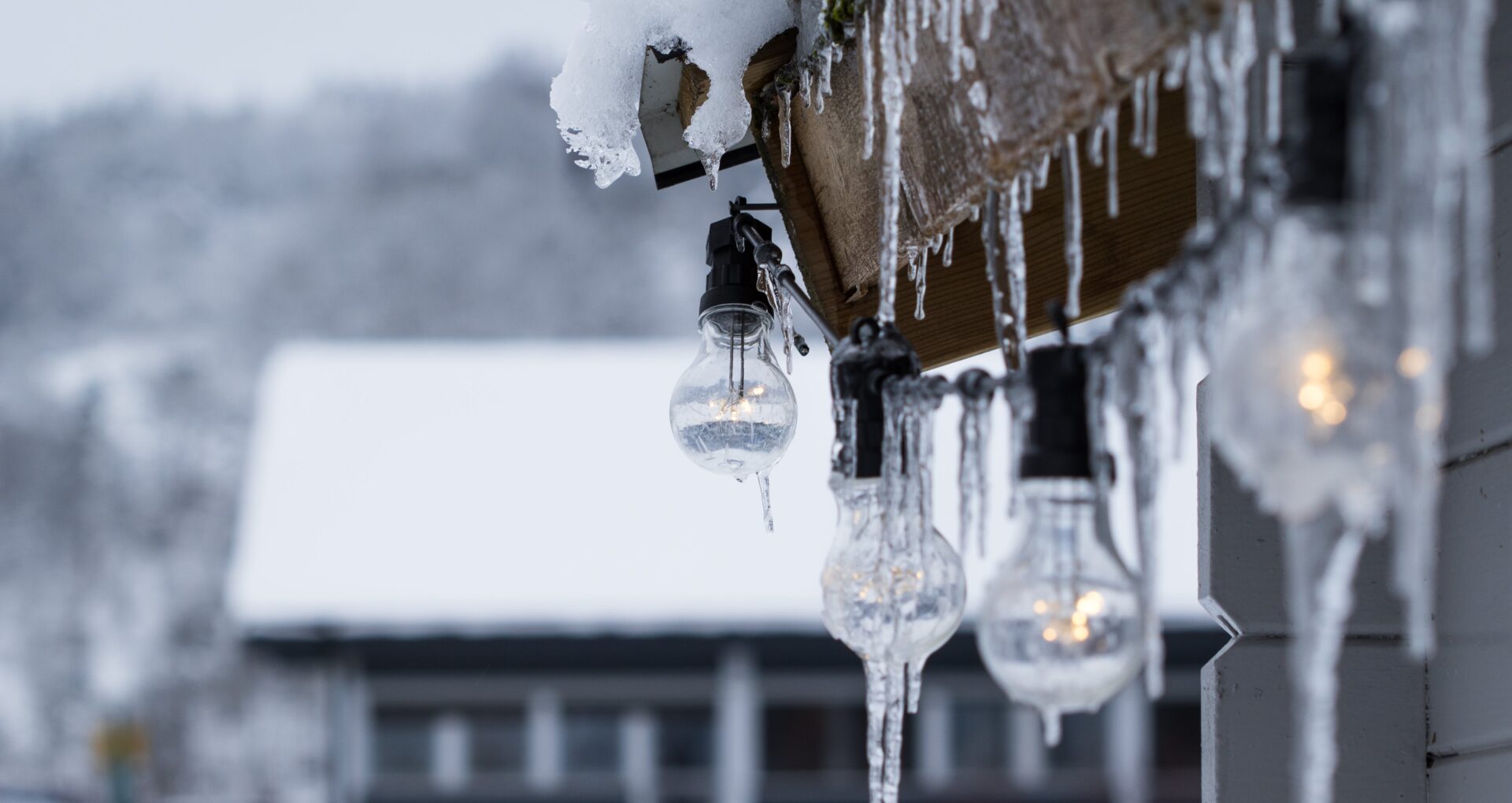
Four Steps to Winterizing Your Home!
As the temperature drops and the icy winds begin to sweep across the vast Canadian landscape, it’s time to prepare your home for the upcoming winter months. Winter in Canada can be particularly harsh, with plummeting temperatures and heavy snowfall posing various challenges for homeowners. However, with some proactive measures and careful planning, you can ensure that your home remains warm, cozy, and energy-efficient throughout the frosty season. Here are some essential tips to help you effectively winterize your home.
1. Seal Windows & Doors & Inspect Insulation
The first step in preparing your home for the cold season is to examine all windows and doors for any potential drafts. Even the smallest gaps can significantly impact your heating bills and comfort levels. Consider using weather-stripping or caulking to seal any leaks or drafts around windows and doors. For an extra layer of insulation, you might also want to install storm windows or doors to provide an added barrier against the cold, depending on where you live. Proper insulation is also crucial for retaining heat and preventing energy loss. In Canadian winters, good insulation can make a noticeable difference in your home’s energy efficiency. Consider inspecting the insulation in your attic, walls, and basement. If necessary, add extra insulation to improve heat retention and reduce the strain on your heating system.
2. Service Your Heating System(s)
Before the winter chill sets in, its vital to ensure that your heating system is in top condition. Schedule a professional inspection and maintenance service for your furnace or heating system. Clean or replace filters regularly to improve efficiency and indoor air quality. Consider installing a programmable thermostat to regulate the temperature and reduce energy consumption when you’re away from home. Additionally, if you have a fireplace they should be inspected and cleaned annually. Bird nests in chimneys and spider webs that clog gas lines can cause fires.
3. Protect Your Plumbing
Frozen pipes can lead to significant damage and costly repairs. To prevent this, empty those pipes, including garden taps and air conditioning, and insulate your pipes, especially those in unheated areas like the basement, crawl spaces, and exterior walls. A trick you can do during those extremely cold nights is to allow a slow drip from faucets to keep water flowing and prevent freezing. If you’re leaving your home for an extended period during winter, consider shutting off the main water supply and draining the pipes to avoid any potential disasters.
4. Clear Gutters and Trim Trees
Don’t ignore the roof, which is your first line of defence against snow and rain. Before the snow and ice accumulate or those heavy rains come, make sure your gutters are clear of any debris to prevent ice damns and water damage. Trimming overhanging tree branches can also prevent them from snapping under the weight of heavy snow and damaging your property.
Preparing your home for the harsh Canadian winter is a vital step in ensuring the safety, comfort, and efficiency of your living space. By following these essential tips and investing in proactive winterization measures, you can safeguard your home from the challenges posed by the cold climate and enjoy a cozy, energy-efficient winter season.
Remember, a well-prepared home not only keeps you warm and comfortable but also helps you save on energy costs and prevents potential damage, ultimately ensuring your peace of mind during the winter months so you and your family can enjoy everything that Canada’s spectacular winters have to offer.
Stay warm and safe this winter!

The Kentel Harrison Team are big sponsors of youth sports in the Shuswap!
Over the past few years we have aimed at increasing our role we play in the community and we thought there is no better way to do it than with youth sports. We officially have four youth sports teams we sponsor in the Shuswap. We are incredibly proud to play a part in building a brighter future for our community and are thrilled to be sponsoring such amazing young talent and helping them reach their dreams. We are very excited to see what they all accomplish this year!
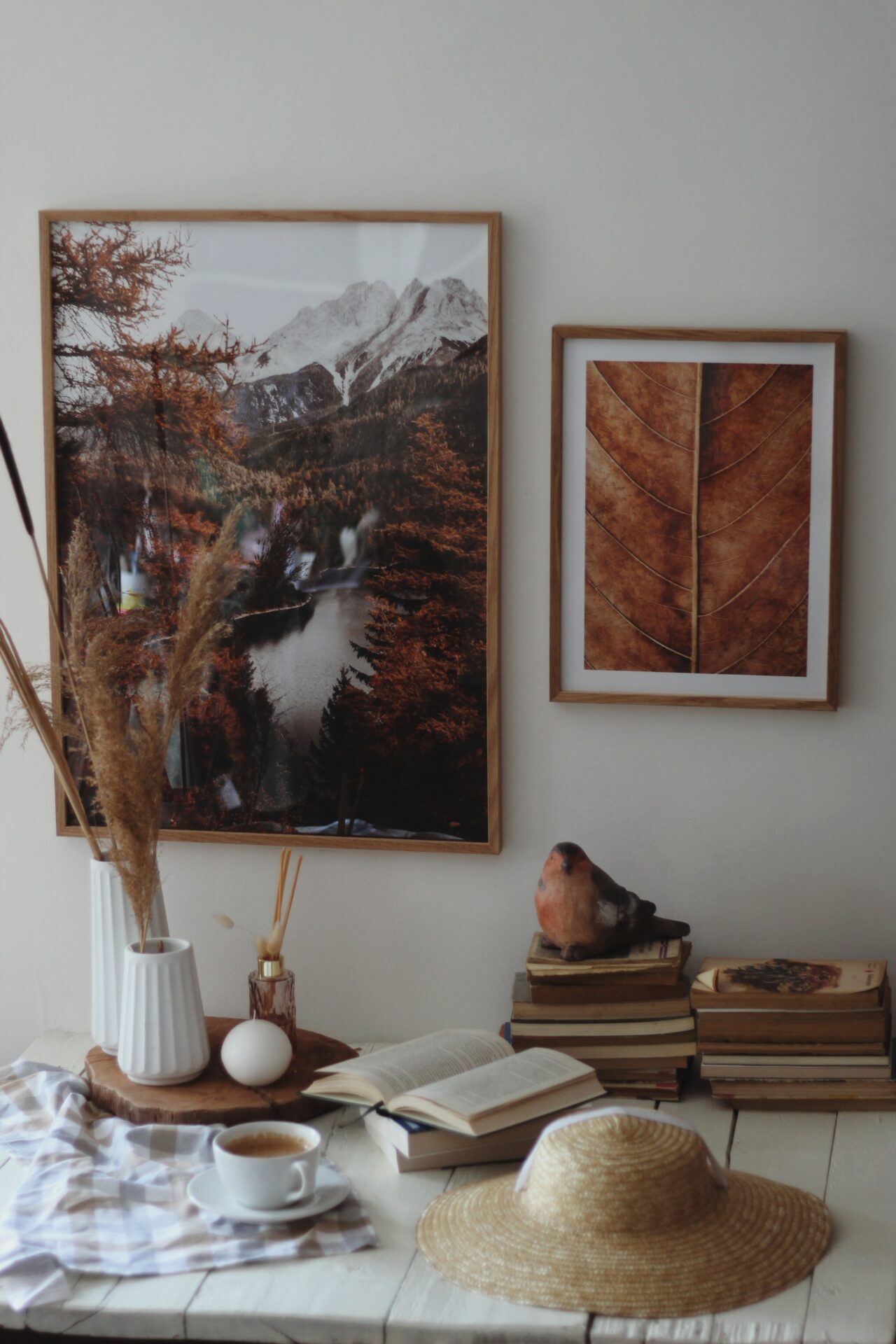
Autumn decor trends of 2023 can be explained in two words… natural and bold.
Not just leaves are changing this fall season but so are our homes, allowing for new environments and experiences to come forward as we move into a slower way of living. With summer ending and its decor trends following behind, autumn brings in a similar feel with earth tones (e.g., forest greens, ochre, rust, and amber) being at the center of design this season. A modern bohemian take on bold prints, bright earth tones, and patterned textiles is sure to bring the comfort you need during this cooler weather.
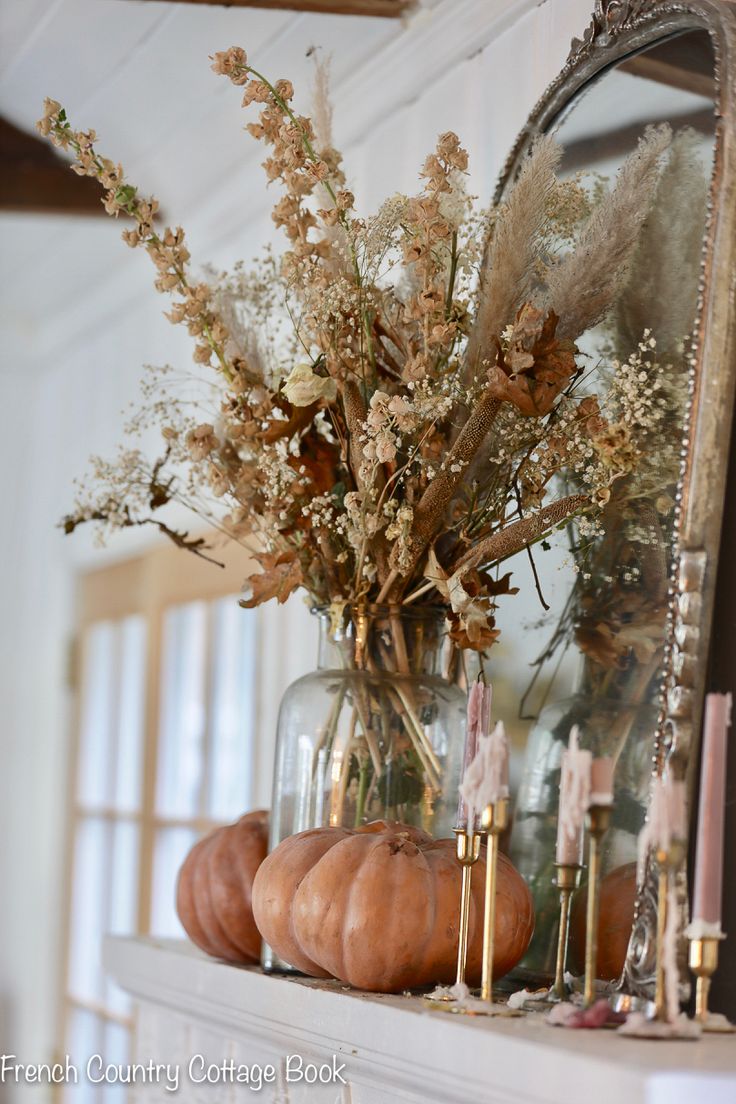
Some of our favourite fall decor trends include incorporating layered textures and lighting, vintage and distressed furniture, as well as having those key statement pieces finishing off each room. Some other important decor trends going around the design world this fall is abstract art, faux florals, heavy weight drapery, and amber or silky velvet ascents! But don’t forget with all these new trends, try to avoid themes in your home and opt for a more natural transition throughout your spaces.
Check in again in a few months for ways to shift out of autumn and into winter!

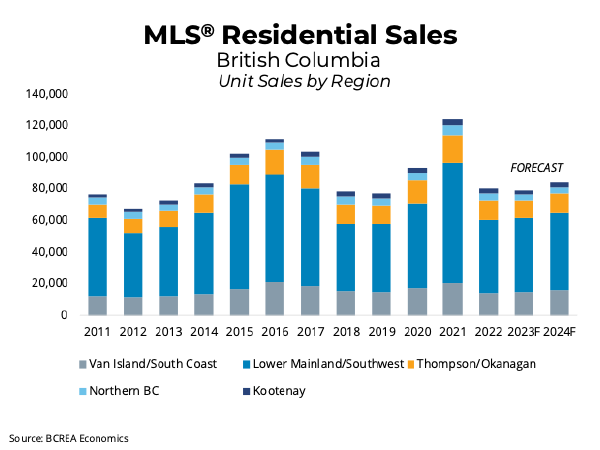
BC Housing Market Resilient Despite High Rates
“Multiple Listing Service® (MLS®) residential sales in BC are forecast to decline 2.8 per cent to 78,640 units this year. In 2024, MLS® residential sales are forecast to post a modest rebound, rising 6.1 per cent to 83,425 units.
“The BC housing market has been more resilient than expected in 2023, with both home sales and prices holding up well in the face of sharply higher interest rates,” said BCREA Chief Economist Brendon Ogmundson. “However, we expect sales to cool as the result of renewed Bank of Canada tightening and a delay in expectations regarding the timing of future Bank of Canada rate cuts from early next year to perhaps the end of 2024 or even mid-2025.”
Because inventory remains very low, prices rose through much of 2023 despite below-average sales. The average price in BC has varied widely throughout this year, beginning the year below $900K before reaching just over $1 million in May as sales in more expensive markets surged amid dwindling supply. If the average price trends near its current level of $970K over the year’s second half, it would mean an annual average price of $976K in 2023, or a 2 per cent decline compared to 2022. As home sales return to normal levels next year, we anticipate prices will rise 2.4 per cent to an annual average of just over $1 million, though there is risk to the upside on price growth given the state of housing supply.
Sources: British Columba Real Estate Association
https://www.bcrea.bc.ca/economics/housing-forecast_/

The Salmon Arm Fall Fair is back with is 124th year of festivities!
Beginning as a small livestock and field crops trading fair in 1897, the fall fair has greatly expanded over the years. Since it began being held yearly in 1946, it has brought not only economic growth to the community but also connection and a whole lot of fun!
This fall fair has a full schedule of things to do for you and your family, from 4H competitions to a large tradeshow, there is a marketplace, food concessions, live performances, many exhibits, and at the heart of it all the display and competition of home arts, livestock, and agricultural products that has not changed since 1897.
You also don’t want to miss the annual fall parade on Saturday morning, you’re sure to catch handfuls of candy and make sure to wave to the amazingly decorated floats that drive by. To top it all off, West Coast Amusements Midway has set up a super fun amusement park for all to enjoy!
For more information check out the Salmon Arm Fair website https://salmonarmfair.ca/history-of-the-fair
We hope to see you all out there having a super fun weekend!

Sources: Salmon Arm Fair